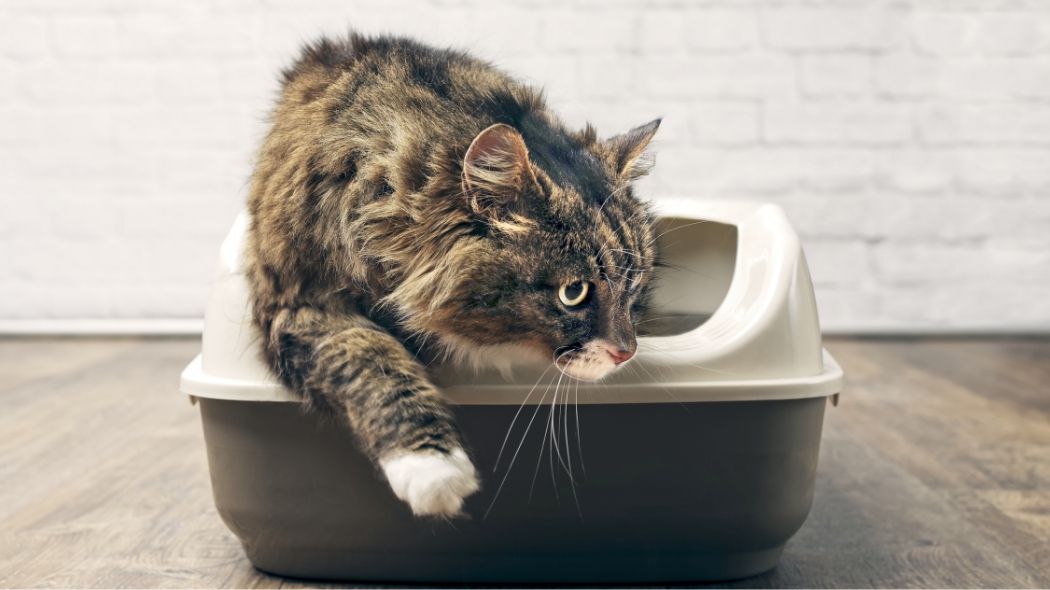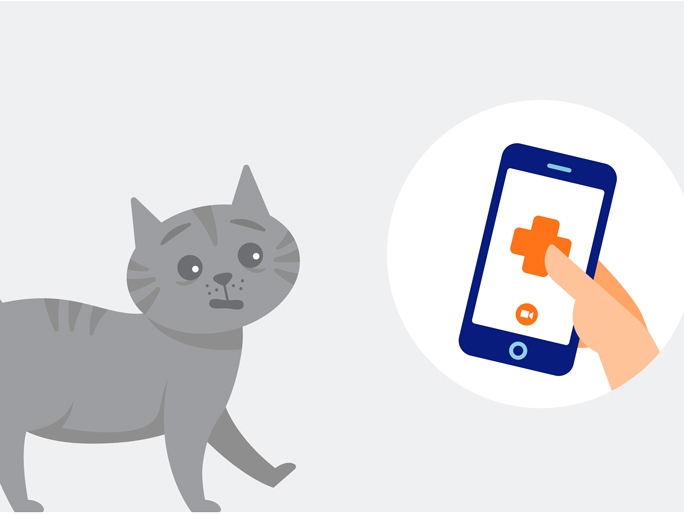managing diet for cats and dogs with diabetes
Know diabetes symptoms in pets, the basics of treatment, and how to manage weight and diet.
Diabetes is a serious metabolic disease that results when your pet can’t produce or use enough insulin to store and metabolize sugar. Don’t wait if you spot symptoms — the sooner you act, the sooner your veterinary team can help your pet.

Common signs and symptoms of diabetes in pets
- Unusual thirst
- Tons of peeing
- Weight loss
- Loss of appetite

How to help manage diabetes in pets (as directed by your vet)
- Special high-fiber and/or low-carb diets
- Strict feeding schedule
- Insulin injections
- Tracked meal and injection schedule
- Glucose tests
- Observation of new symptoms
- Exercise for healthy weight
Know the signs and symptoms of a diabetic dog or cat
Diabetes is a serious chronic medical condition. A diabetic pet needs life-long veterinary management plus careful dietary control to avoid severe illness or diabetes-related death.

What is diabetes mellitus, and why is diabetes life-threatening?
Diabetes is a disease of the metabolic system where the body can’t use glucose (a type of sugar) normally. Your pet’s body is designed to break down food and water into fuel, including glucose. Normally, a hormone called insulin would pull that glucose out of the bloodstream and either store it or use it as fuel.
Diabetic pets have difficulty removing glucose from their blood. Their bodies either can’t produce enough insulin or are unable to use it properly. When blood sugar isn’t turned into energy or stored away for future use, fuel delivery to the body falls short, and glucose builds up in the blood.
Both too much blood sugar or not enough for body fuel can be actively dangerous for your pet. Untreated diabetes can lead to long-term health problems, including urinary tract infections, cataracts and blindness, organ damage, organ failure, and even death.
How common is diabetes in pets?
About one in every 100 cats and one in every 300 dogs are diagnosed with diabetes in their lifetime. Overweight or obese pets are especially at risk.
Cats and dogs can develop diabetes at any age, but it’s more common in pets over four years old. Dogs are commonly diagnosed after four years of age and cats after the age of six.
What are the symptoms of diabetes in pets?
Body systems rely on a stable blood sugar supply to function, so a glucose imbalance throws your BFF’s entire metabolism out of whack.
The first thing most pet owners notice is that their pet is drinking a lot of water and peeing more than usual, often paired with noticeable weight loss.
If you spot these symptoms, don’t wait. The sooner you act, the sooner your veterinary team can help your pet.
- Increased water drinking and peeing due to the body trying to flush out extra glucose in their urine
- Weight loss despite eating the usual amount as their hungry cells break down fat and muscle tissue for fuel
- Weight loss from loss of appetite is also common, particularly in cats, as the higher blood glucose can make them feel ill or tired
Know how to help manage blood sugar in diabetic cats and dogs
With proper food and medical management, many diabetic cats and dogs can live full, happy lives.
Diabetes is managed with a strict diet and insulin injections as prescribed by your vet
If you suspect your pet has diabetes, your first step is to get a diagnosis from a qualified veterinarian. Self-diagnosing diabetes or trying to manage it on your own can be really dangerous for your pet.
Once your veterinarian confirms your cat or dog has diabetes, be prepared to follow a consistent routine to help stabilize your pet’s blood sugar.


Feed your pet a special diet on a strict feeding schedule
Diabetic pets often need special or therapeutic foods to help them maintain a healthy blood sugar level. These foods are generally high in fiber to slow digestion, as well as low in fats and simple carbohydrates to help avoid blood sugar spikes.
If your veterinarian recommends a special diet, be sure to follow all instructions and feed your pet the exact recommended amount at the same time every day.
Diabetic pets will also need diabetic cat treats or dog treats. Talk to your veterinarian about how to best treat your pet — we can help guide you on safe ways to still have those yummy moments.

Provide insulin injections as directed by your veterinarian
Giving your pet an injection may sound scary, but the vast majority of owners and pets easily make it part of a daily routine.
If your pet requires it, your veterinary team will advise you on how to give your diabetic cat or dog insulin. They’ll also give you advice on timing, amount, and the safest way to hold your pet to deliver their medication each time.
It’s very important to follow all veterinary instructions for your pet’s insulin injection. Feed your pet the exact recommended amount and give them their meds at the same time every day.
The one exception? If your pet stops eating, their usual insulin dose could be dangerous. Check with your veterinary team for instructions before you follow your regular routine.
Weakness, shaking, tremors, or seizures are danger signs of an insulin issue in pets. Don’t wait — seek immediate emergency veterinary care and speak to your veterinarian in advance to learn how you can respond to these situations at home.

Keep careful track of injections, meals, and tests
Keep an accurate record of pet meals and insulin doses to help avoid under-dosing or overdosing your pet. If a friend or family member is caring for your BFF, make sure they know what to do and where you keep these important records.
It can also help to keep an eye on the water bowl. Your pet’s thirst should ease a bit once they start treatment, but if their greedy gulping starts up again, reach out to your veterinary team about evaluating their treatment plan.

Run glucose tests to monitor blood sugar levels
If your pet is diabetic, your vet may ask you to regularly test your pet’s blood or urine for glucose levels. This helps you and your vet keep track of your pet’s disease and to make sure your pet’s medical routine is effectively supporting their metabolism.
Monitoring your pet’s blood glucose is a very important part of supporting your diabetic pet. Follow all directions on these tools carefully.

Help your pet reach a healthier weight
Consider daily exercise part of your pet’s diabetes management plan along with regularly scheduled injections and mealtimes.
Whether it’s feather toy playtime with your cat or a walk with your dog, exercise can help your pet’s body process foods and shed weight that’s affecting internal organs and metabolic processes.

Need advice on flea control? Ping Pet Chat™!
Whether it's 3 a.m. or 3 p.m., connect with a real veterinary professional for immediate petcare advice. It's included in all Optimum Wellness Plans®!
Log in to start chattingHow Banfield can help with dog and cat diet and nutrition
What your pet eats can make a big difference to their health! Our vets can perform physical exams, run tests, and help you manage your pet’s food-related issues, including obesity, diabetes, and food allergies.

Get help managing pet food allergies. Do you think your pet’s immune system is reacting to certain ingredients in their food? We can help identify pet food allergies and work with you on management diets.
Does your pet have diabetes? Let’s work together! This includes everything from recommendations on what to feed your pet, how to manage their food and injection schedule, providing appropriate prescriptions, and showing you how to safely perform insulin injections for the pet you love.
We can help your pet reach a healthy weight. We've got advice on diet and exercise for both overweight and underweight pets. Does your pet have a mobility issue that makes it hard for them to exercise? We can help there, too.
 Mites and mange
Mites and mange Podcast - Not Just Fluff
Podcast - Not Just Fluff



